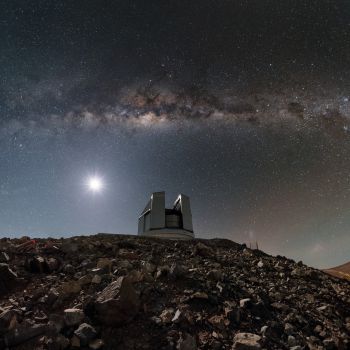Research news
Sussex researchers help new telescope to capture unprecedented view of distant stars
By: Imogen Harris
Last updated: Thursday, 23 October 2025

A new telescope using optical fibres has just begun observations from Chile, thanks to a key role played by Sussex researchers. This will allow astronomers to see further into the universe than ever before.
The 4-metre Multi-Object Spectroscopic Telescope (4MOST) was used for the first time on 18 October 2025. It uses 2,438 optical fibres, each the size of a human hair, to observe thousands of celestial objects and capture spectacular data from galaxies up to 10 billion light-years away.
4MOST's field of view spans 2.5 degrees—five times the moon's diameter—making it one of the largest for any telescope in its class. It uses specific fibres to study rare objects while others build large statistical samples of stars or galaxies.
Sussex researchers are a vital part of the team, including four faculty members and five students. Professor Jon Loveday, 4MOST Project Scientist, was part of the team capturing first light on sky, while three Sussex PhD students serve on the Commissioning and Science Verification teams.
The 4MOST facility is a collaboration between 30 universities and research institutes across Europe and Australia, with more than 700 investigators worldwide. Over its first five years, the telescope will conduct 25 different science programmes, with the results distributed to the scientific community.
You can read more about this research at this link.
This work supports the UN’s Sustainable Development Goals: SDG 9 – Industry, innovation and infrastructure. You can read more about our work on the SDGs here.